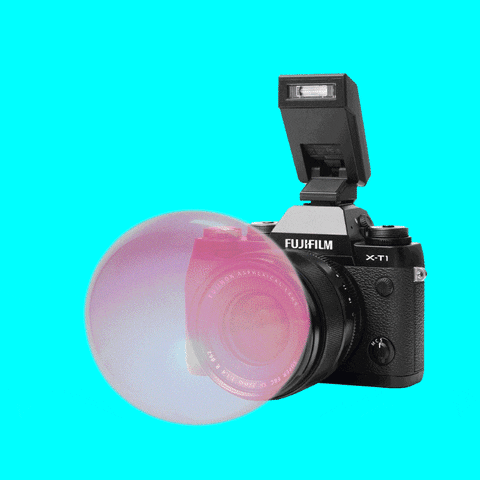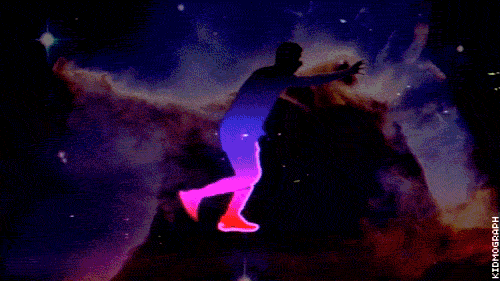- The Creator Lens
- Posts
- 🎨 The Rise of Nomadic Galleries
🎨 The Rise of Nomadic Galleries
Nomadic galleries are on the rise, where art flourishes in flexible spaces, breaking free from traditional confines.Meanwhile, ByteDance rushes into the AI video scene with Jimeng AI, pushing the boundaries of creativity. And has the era of mindless consumption met its match? The “underconsumption core” hashtag is making waves as Gen Z and millennials boldly prioritize quality over quantity—showcasing their favorite worn-out sneakers and near-empty makeup jars.
Don’t miss the unveiling of nomadic galleries—art on the move that’s redefining how we experience creativity. TikTok's 'Underconsumption Core' is reshaping how we think about content and engagement. Plus, ByteDance introduces Jimeng AI, giving Sora a new frenemy to contend with in the digital space.
In today's rundown
VISUAL CREATORS
For your artistic side.
The Story: The rise of nomadic galleries is reshaping the art landscape, allowing artists to showcase their work without the constraints of permanent spaces. Emerging as a response to pandemic challenges and soaring real estate prices, these galleries offer flexibility and accessibility, allowing for creative engagement in various locations while minimizing overhead costs.
The Details:
Nomadic galleries adapt to changing landscapes by utilizing temporary spaces and online platforms, making art more accessible to diverse audiences.
Founders like Storm Ascher of Superposition emphasize community engagement and support for artists from underrepresented backgrounds, promoting art without displacement.
These galleries thrive during art fairs, creating partnerships and collaborative exhibitions that enhance visibility.
Economic considerations drive the strategy, as nomadic spaces often require lower costs than traditional long-term leases.
Technology plays a crucial role, enabling galleries to reach broader audiences and create immersive experiences beyond physical limitations.
Why It Matters: The evolution of nomadic galleries signifies a pivotal shift in how art is experienced and consumed, reflecting a need for more inclusive and adaptable approaches in a post-pandemic world. For photographers, filmmakers, and creative professionals, understanding this trend offers insights into innovative exhibition models, community engagement strategies, and the benefits of flexibility in an ever-changing market. By embracing these changes, creatives can better navigate the challenges of a dynamic art ecosystem while fostering diverse artistic expressions.
PRODUCTION MASTERY
The commercial aspects of creativity.
The Story: ByteDance has launched its new AI text-to-video generator app, Jimeng AI, in China, directly competing with OpenAI's Sora. Users can create videos from text prompts, with subscription options ranging from $9.65 monthly to $92 annually. Jimeng promises a variety of creative features, but it enters a crowded market with regulatory challenges and quality questions lingering around its offerings.
The Details:
Jimeng AI launched on July 31 for Android and rolled out to the Apple App Store a week later, currently only for Chinese users.
The app allows users to generate around 168 videos a month, making it competitive with other text-to-video services launched recently in China.
Jimeng offers unique features, such as customizing existing images and instructions for background changes, aimed at broad creative usage from marketing to education.
ByteDance's venture comes amid a growing market for generative AI services in China, forecasted to reach 9.3 billion yuan by 2026.
Unlike OpenAI, Jimeng may have to navigate regulatory issues, as ByteDance has previously faced scrutiny regarding content scraping.
Why It Matters: Jimeng AI's entry into the text-to-video market signifies the rapid evolution of generative AI tools in China and competition alongside established players like OpenAI. For creative professionals, the emergence of more accessible platforms could enhance content creation capabilities, but concerns about content quality and ethical practices loom large, making it imperative for creators to stay informed as these technologies evolve. As the market grows, understanding tool effectiveness and ethical considerations will be crucial for leveraging these advancements responsibly.
Almost everyone hates emails, I certainly do, which is why we made a brand new app and WhatsApp channel, just for you 😘
Installing the app:
Go to our website on your phone.
Open the menu (the button on the top-right of your screen).
Click on “Add App to Home Screen”.
Enjoy 🎉
Prefer WhatsApp?
Check out the new public channel to receive your news over there instead.
P.S. Tired of reading?
Click “Listen Online” a the top of the post to enjoy our brand new Audio Newsletter feature 🎧 You can give your eyes a break and tune in now!
CREATOR ECONOMY
Navigating the digital creative world.

The Story: The viral trend "underconsumption core" has emerged across social media, encouraging young adults to embrace a more mindful approach to consumerism. Influencers are advocating for using what they own, repairing items, and resisting the urge to constantly buy new products, leading to a cultural shift in how we view possessions.
The Details:
"Underconsumption core" emphasizes the beauty in worn-out possessions, fostered by a generation raised on fast fashion and disposable goods.
Influencers like Sabrina Pare advocate that it’s perfectly normal to enjoy a simple life without constant shopping sprees and excessive hauls.
This movement is contrasted with trends like deinfluencing, which discourage purchasing entirely and promote using items until they’re no longer useful.
Awareness of environmental impacts and the financial constraints of rising living costs are significant factors driving this trend.
As luxury brands face declining sales, consumer preferences shift towards sustainable, well-used items that resonate with this intentional lifestyle.
Why It Matters: "Underconsumption core" reflects a broader cultural phenomenon, where consumers, particularly Gen Z, are reevaluating their relationship with material possessions. This shift signifies a rejection of hyper-consumerism, touching on sustainability and environmental consciousness, which stands to influence design and marketing strategies moving forward. Brands that embrace this trend by creating durable, high-quality products may not only appeal to a new generation but also carve out a niche in a market increasingly wary of wastefulness. Understanding this movement is crucial for creative professionals looking to stay relevant in an evolving industry landscape.
📫 Sign up for The Creator Lens
🔥 Press Worthy

📽️ VISUAL CREATORS
Fujifilm CEO Teiichi Goto revealed that the surge in demand for retro cameras has led to lengthy waiting lists for models like the X100VI. Struggling to meet production needs, he highlights the artisanal, handmade-like design process as a "rate-limiting factor" in manufacturing these sought-after devices.
Zoom has unveiled the H1 XLR audio recorder, ditching the built-in mic for pro-level flexibility. With dual XLR inputs, 32-bit float recording, and USB-C connection, it's a game-changer for video creators.
📈 PRODUCTION MASTERY
Stereoscopic 3D video is back with the Apple Vision Pro, but will it finally succeed? Improved tech and familiar workflows make experimentation easier. Distribution remains messy, but updates to Final Cut Pro and DaVinci Resolve may streamline creation soon. Time to explore!
Deadpool & Wolverine might be Marvel's ticket back to the top! As the first major film since Endgame, it embraces past failings with humor, helping the stuttering MCU find its voice again. With Ryan Reynolds and Hugh Jackman leading the charge, it's a must-watch!
🎭 CREATOR ECONOMY
Instagram has launched a live test of its new "Friend Map" feature, letting users see friends' locations and tagged posts. Designed for close connections, it aims to enhance real-life meet-ups while navigating privacy concerns—caution is key, especially in digital friendships!
India's government is pushing to classify social media creators as "digital news broadcasters", requiring costly registration and content checks. Creators fear losing their channels over vague regulations aimed at tightening control over free speech, sparking backlash online.
📫 Sign up for The Creator Lens
📚 Learn & Grow

📽️ VISUAL CREATORS
Navigating the Hyper-Future: The Visionary Art of Ziyue Wang.
'What is the museum of the future?' The National Gallery's forward-looking digital strategy
📈 PRODUCTION MASTERY
A Nudist Art Exhibition That You Can See Naked
Aftershoot’s “Create Together Fund”: a $1M grant for photography communities
🎭 CREATOR ECONOMY
Hello, goodbye: the rise and decline of the celebrity video-greeting app Cameo
Boost Your Social Media Impact: The Ultimate Daily Productivity Guide


Reply